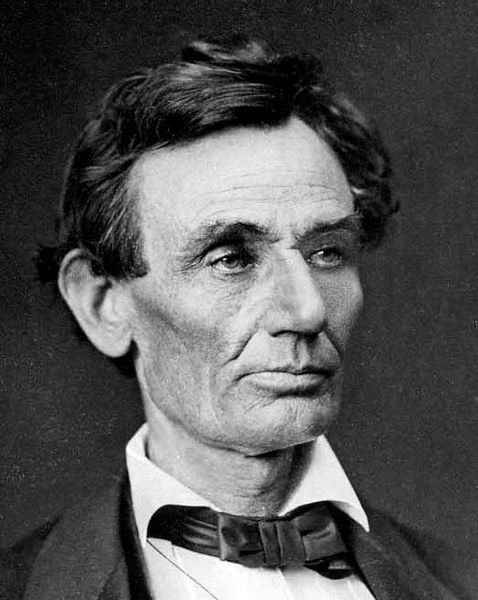- The Fourth Turning morphology admits to acceleration.
- That acceleration can add to the tragedy of the outcome.
The catalyst for the Crisis was the election of Abraham Lincoln as President of the United States. After the Compromise of 1850, who would have envisioned the election of an unknown Congressman from an abolitionist party that didn't even exist in 1850. Beyond that, could anyone have predicted the carnage from the bloodiest war in the history of mankind being the result of that election? Many people do not know that there were four candidates for President in 1860 and that Lincoln won the election with only 39.8% of the popular vote. Lincoln won the Presidency and he wasn't even on the ballot in Alabama, Arkansas, Florida, Georgia, Louisiana, Mississippi, North Carolina, Tennessee, or Texas.
The Republican Party realized they had a tremendous opportunity to win the Presidency as the Democrats were in disarray. Since it was essential to carry the West, and because Lincoln had a national reputation from his debates and speeches as the most articulate moderate, he won the party's nomination on the third ballot on May 18, 1860. The Republican platform stated that slavery would not be allowed to spread any further, and it also promised that tariffs protecting industry would be imposed, a Homestead Act granting free farmland in the West to settlers, and the funding of a transcontinental railroad.  All of these provisions were highly unpopular in the South.
The Democratic Party split into two factions due to the issue of slavery. Stephen A. Douglass became the Northern Democrat candidate. He was a moderate on the slavery issue. John C. Breckinridge was selected by the Fireaters from the Deep South. Breckinridge supported extending slavery into territories whose voters did not want it. A fourth party called the Constitutional Union Party made up of die-hard former Southern Whigs and Know Nothings who felt they could support neither the Democratic Party nor the Republican Party was formed. They nominated John Bell of Tennessee for President. The party platform advocated compromise to save the Union, with the slogan "the Union as it is, and the Constitution as it is."
The voter turnout rate in 1860 was the second-highest on record (81.2%, second only to 1876, with 81.8%). The voter turnout in 2008Â of 56.8% was the highest for a Presidential election since 1968.
Nominee: Abraham Lincoln                       Nominee: John C. Breckinridge
Party: Republican                                         Party: Southern Democrat
% of Vote: 39.8%Â Â Â Â Â Â Â Â Â Â Â Â Â Â Â Â Â Â Â Â Â Â Â Â Â Â Â Â Â Â Â Â Â Â Â Â Â Â Â Â Â Â Â Â Â % of Vote: 18.1%
Electoral Votes: 180Â Â Â Â Â Â Â Â Â Â Â Â Â Â Â Â Â Â Â Â Â Â Â Â Â Â Â Â Â Â Â Â Â Â Â Â Â Electoral Votes: 72
ÂNominee: John Bell                                       Nominee: Stephen A. Douglass
Party: Constitutional Union                         Party: Northern Democrat
% of Vote: 12.6%Â Â Â Â Â Â Â Â Â Â Â Â Â Â Â Â Â Â Â Â Â Â Â Â Â Â Â Â Â Â Â Â Â Â Â Â Â Â Â Â Â Â Â Â Â Â Â % of Vote: 29.5%
Electoral Votes: 39Â Â Â Â Â Â Â Â Â Â Â Â Â Â Â Â Â Â Â Â Â Â Â Â Â Â Â Â Â Â Â Â Â Â Â Â Â Â Â Â Electoral Votes: 12
As the 1850s progressed the firebrands in the North and South became more entrenched in their dogmatic positions. The Transcendental Generation Prophets came to power and compromise was no longer an option. Both Lincoln and Jefferson Davis were from this Prophet generation. Aging Prophets are always the moralistic drivers of Fourth Turnings. Strauss & Howe stress the importance of the Prophet Generation during a Fourth Turning:
A Crisis catalyst occurs shortly after the old Prophet archetype reaches its apex of societal leadership, when its inclinations are least checked by others. A regeneracy comes as the Prophet abandons any idea of deferral or retreat and binds the society to a Crisis course. A climax occurs when the Prophet expends its last burst of passion, just before descending rapidly from power.
(Note: You can view every article as one long page if you sign up as an Advocate Member, or higher).







